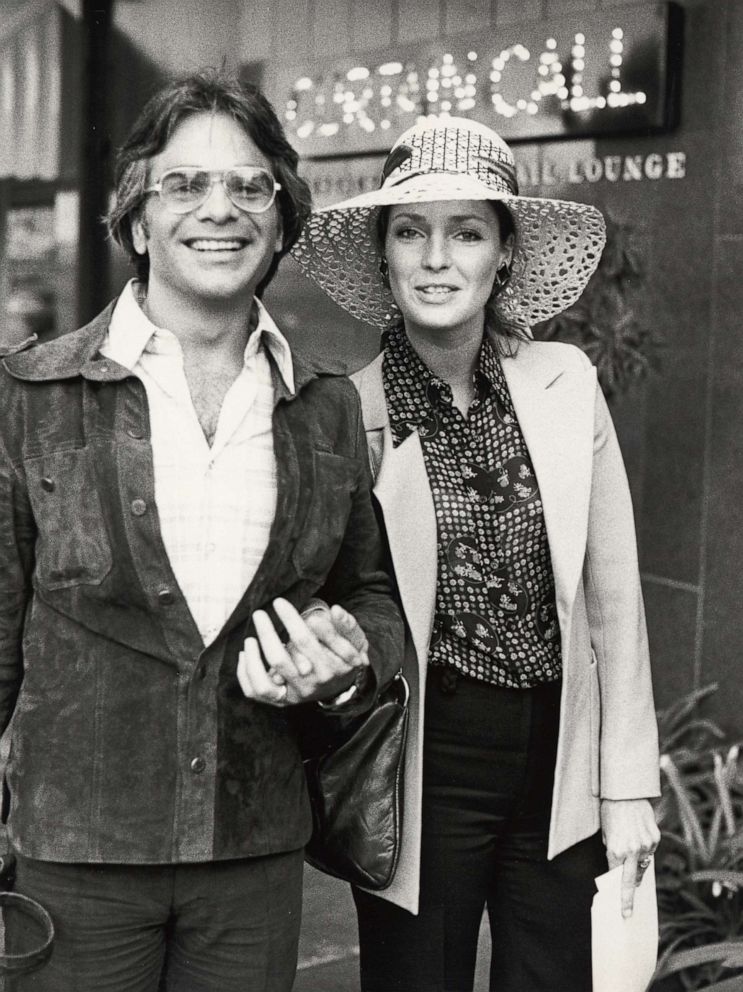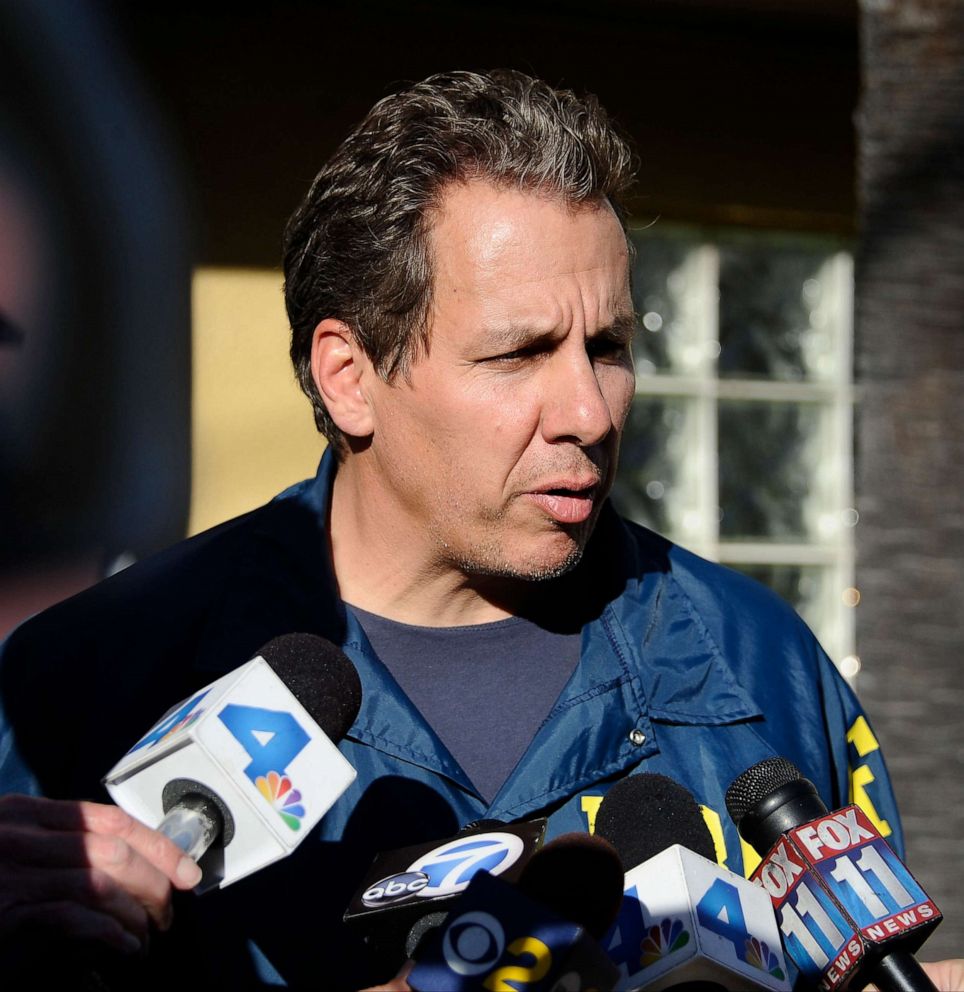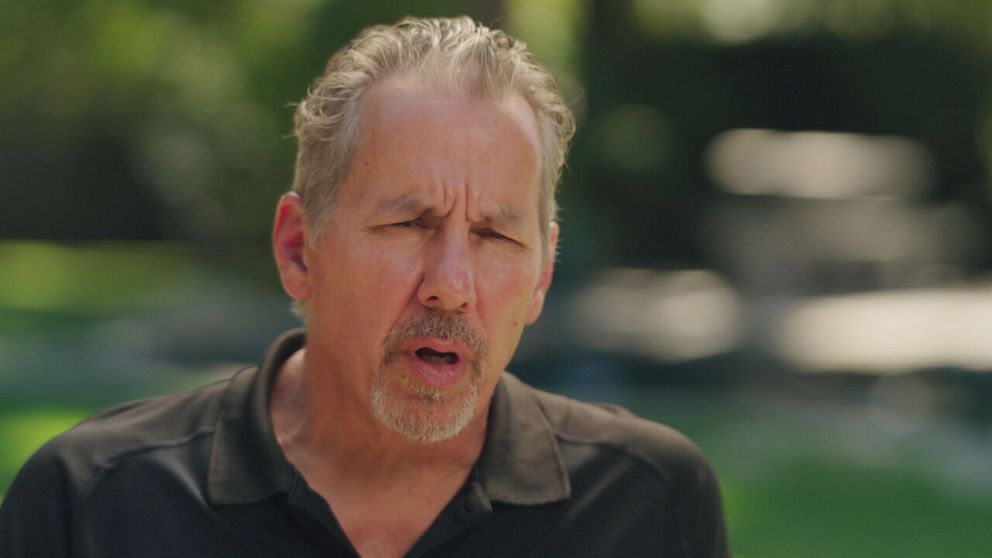Behind Chippendales' glam was a founder who orchestrated murder-for-hire plots
Former Chippendales performer Read Scot was having a good night in England at his new gig with male exotic dance troupe “Adonis” when all of a sudden one of the group’s founders came over and asked him to step off the stage, he said.
Scot said they walked over to a little office space in the theater Adonis was performing in -- a huge show in the Atlantic City-esque resort town of Blackpool, England -- and that’s when he learned his life was in danger.
"There are two gentlemen in suits, and they introduce themselves as FBI," said Scot. "[They] said, 'We believe someone is out to get you.'"
Scot said the FBI agents explained during that July 1991 conversation that they had intercepted a call, and they believed a hit had been put on him and two other Adonis members to be killed by cyanide injection.
“I couldn't believe it was real. I just couldn't believe that somebody would do that to me. But once it sunk in, [I thought] this is serious. Somebody is trying to kill me,” Scot said. “And I said, ‘Banerjee. It's got to be Banerjee.’”
Steve Banerjee was the founder of Chippendales. Behind the glitz and glam of one of the sexiest shows in entertainment, an FBI investigation eventually revealed Banerjee was the mastermind behind multiple murder-for-hire plots, including one against Scot.
Watch the full story on “20/20” FRIDAY at 9pm ET on ABC. The intimate details of this case are also featured in a new Discovery+ series, "Curse of the Chippendales.”

Banerjee, who owned a nightclub in West Los Angeles called Chippendales, launched his first show featuring male strippers in 1979. The idea proved to be an overnight success, and Banerjee, an immigrant from Mumbai, India, had lines of women gathered outside his club almost nightly.
"It was the first time ever where something was completely geared to the ladies," said Candace Mayeron, former associate producer for Chippendales. “We built an environment for women to let it all hang out.”
In the early 1980s, Banerjee wanted to upgrade the performance and eventually expand, so he hired former Emmy-award winning television producer and choreographer Nick DeNoia to help with the expansion. They eventually opened a new Chippendales show at a club in New York City.
According to Scot, Banerjee and DeNoia's relationship began to sour, and they would often clash over the creative direction of the show. Eventually, Banerjee and DeNoia cut a deal recorded on the back of a napkin, where DeNoia would get fifty percent of the profits from a touring version of the Chippendales.
But when it became apparent that touring had become a lucrative part of the business, Banerjee became frustrated with DeNoia's success, distrustful that DeNoia was paying Banerjee his fair share of the touring profits, and hired a man named Ray Colon to help carry out an attack on his business partner, according to FBI special agent Scott Garriola.

Colon recruited an accomplice named Gilberto Rivera Lopez.
On April 7, 1987, Colon and Rivera Lopez travelled from Los Angeles to the Chippendales office in New York, according to Garriola. Rivera Lopez shot DeNoia in his office, and the gunman fled before police arrived.

At the time, nothing linked Banerjee to the murder. Business went on as usual, and the case remained unsolved for years. Banerjee bought back the touring rights from the DeNoia family, Scot said.
By the early ‘90s, other male strip clubs and performances popped up, including Adonis in London, which was started by a group of former Chippendales performers who hired Scot as the emcee.
"They were directly now competing with Chippendales. So what would you expect Banerjee to do when he has a competition? He wanted these people killed," said Garriola.
In 1991, an FBI agent in Las Vegas got a call from an informant known as “Strawberry,” who reported that Colon had tried to hire him to carry out a hit on Adonis employees.
"[Colon] gave him an eyedropper bottle full of cyanide," said Garriola. "[Strawberry] took all this, he flew over there [to England], got cold feet."
Based on the informant’s information, authorities searched Colon’s house and found 46 grams of cyanide, enough to kill 230 people, according to the FBI. Colon was arrested and charged with conspiracy and murder for hire.
After sitting in jail for seven months, Colon decided to cooperate with the FBI. Garriola said Colon told authorities Banerjee was behind DeNoia's murder and the plot against the Adonis dancers. Garriola said they decided to set up a sting operation to secretly record Banerjee admitting to his role in the crimes, using Colon as an undercover informant. The FBI arranged for Colon to be released from jail under the ruse that Colon needed special treatment for a terminal issue with his kidneys, according to Garriola.
Meanwhile, Rivera Lopez, the trigger man in DeNoia’s murder, was already in prison for an unrelated crime.
On June 23, 1992, with the FBI monitoring, Colon asked Banerjee to meet him at an I-HOP in Santa Monica, California, while he was wearing a recording device. Garriola had brought Colon’s boxer shorts to an Italian tailor he knew to create a flap in the underwear where they hid the micro cassette recorder. But the meeting was a bust, Garriola said.

When Colon arrived, Banerjee directed Colon to meet in the bathroom and put his finger to his lips. Any time Colon asked a question, a paranoid Banerjee wrote his answer on a Post-it note, then ripped it up and threw it in the toilet, according to Garriola.
The altered boxer shorts came in handy when Garriola said Banerjee made Colon strip down to his shorts in the bathroom, but didn’t find the device.
“We don't capture anything on a recording device,” Garriola said. “There's a lot of rustling and you could hear whisper-talking, you could hear scratching of a pencil. You just can't hear anything of value.”
The FBI had a “major problem,” Garriola said, because Banerjee knew Colon had been arrested, and may have been suspicious as to why Colon had been released.
“It's going to be hard to convince that person on the outside that this person that's in custody is not cooperating with the government,” he said. “It was a major obstacle.”
Garriola said he devised a new plan to have Colon pretend he was a fugitive on the run overseas and have Banerjee meet him in Europe. When Banerjee found out that Colon was in Europe he agreed to fly there to meet him. The two men met in a Zurich, Switzerland, hotel room to discuss business. What Banerjee didn’t know, Garriola said, was that the FBI was secretly listening and recording their conversation from the room next door.
The conversation went on for three or four hours, Garriola said. Banerjee, who was still unsure if he could trust Colon, even said at one point he thought the walls were thin and he was nervous the FBI was listening next door. But eventually, Garriola said, their patience paid off.
“[Banerjee asked] if the FBI had mentioned anything to Colon ‘about the D.’ That's what was the code word that they used... for DeNoia's name,” Garriola said. “And then Banerjee asked Colon, ‘Do they know that I gave you the money to buy the guns?’”
Garriola said the FBI knew at that point Banerjee had given Colon $500 to buy guns used in DeNoia’s murder.
"We hear Banerjee confess to his complicity in hiring Ray Colon for the murder of DeNoia. They talk about the attempted murders of Read Scot and other dancers," said Garriola. "We were able to get the evidence that we needed."
After Banerjee was arrested in September 1993, he pleaded guilty to racketeering and murder for hire. However, in 1994, a day before Banerjee was to be sentenced, he died by suicide.
"He didn't get the punishment he deserved. He didn't serve the time for Nick DeNoia, for destroying lives, for trying to kill people," said Scot. "He got out easy. He was a coward."
Gilberto Rivera Lopez, the man who actually killed DeNoia, was eventually convicted of second-degree murder and sentenced to 25 years to life in prison.
Colon pleaded guilty to conspiracy and murder for hire and received a reduced sentence for his cooperation with the FBI in bringing down Banerjee. After Banerjee’s death, Colon served an additional two years in a federal prison and house arrest, and was released in 1996.

Chippendales, with new owners, remains iconic -- a staple on the Las Vegas strip. A movie about Banerjee is in the works.
“I think that the story of Chippendales is still important to tell… in terms of how an apparent business success can go murderously wrong,” said Natalia Mehlman Petrzela, the host of the “Welcome to your Fantasy” podcast. “It's a kind of instructive morality tale about human nature and the perils of power and success.”




